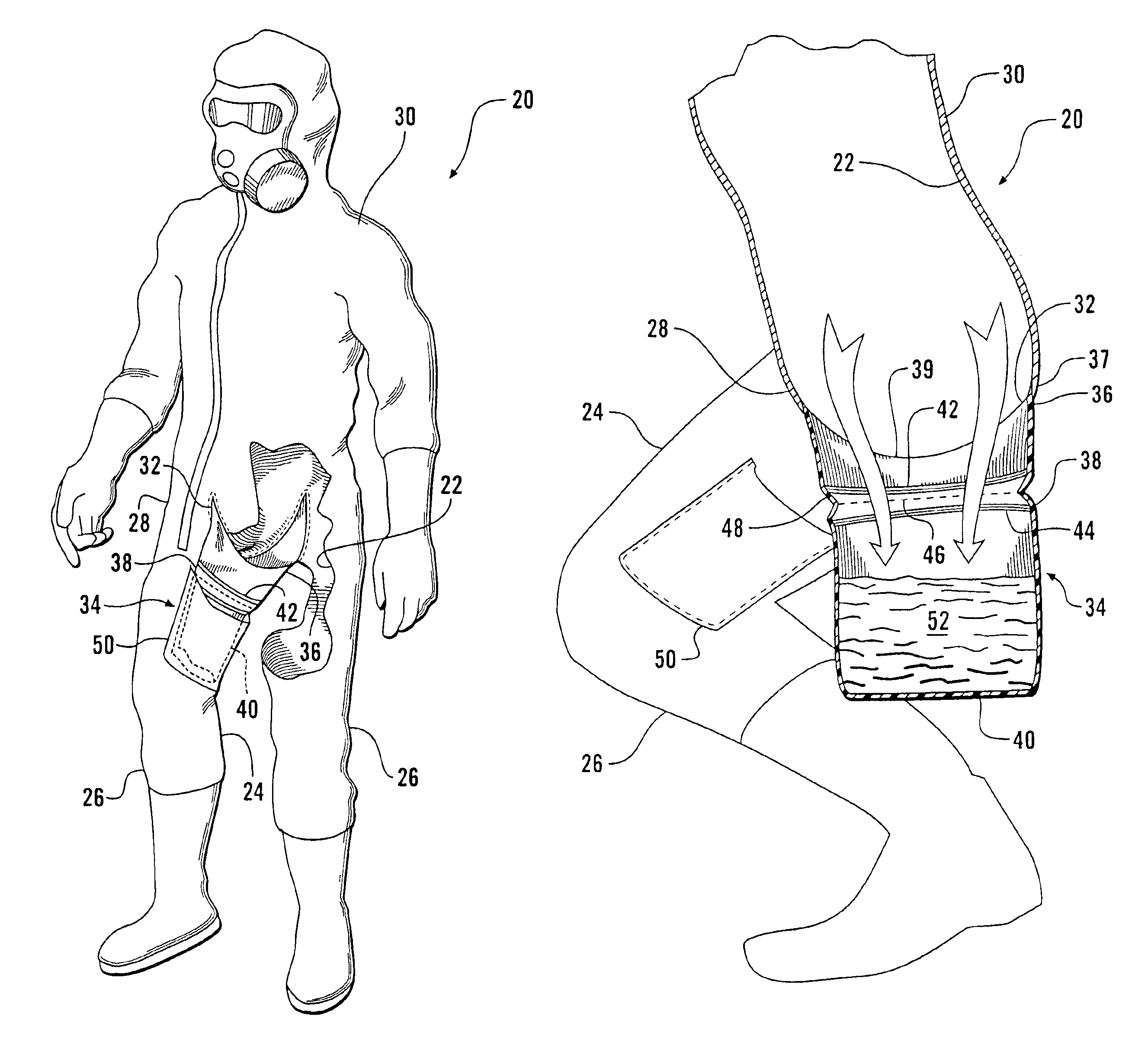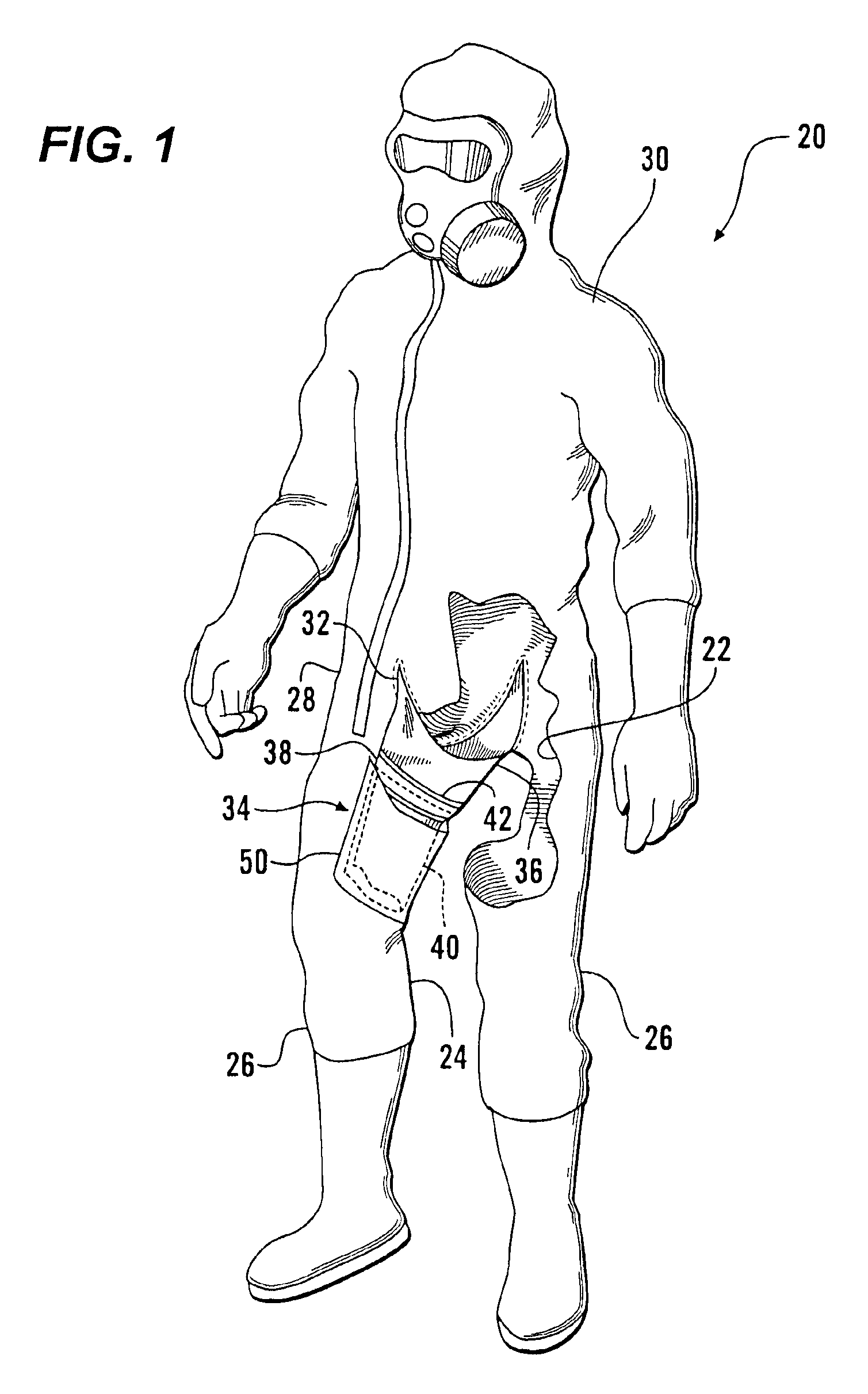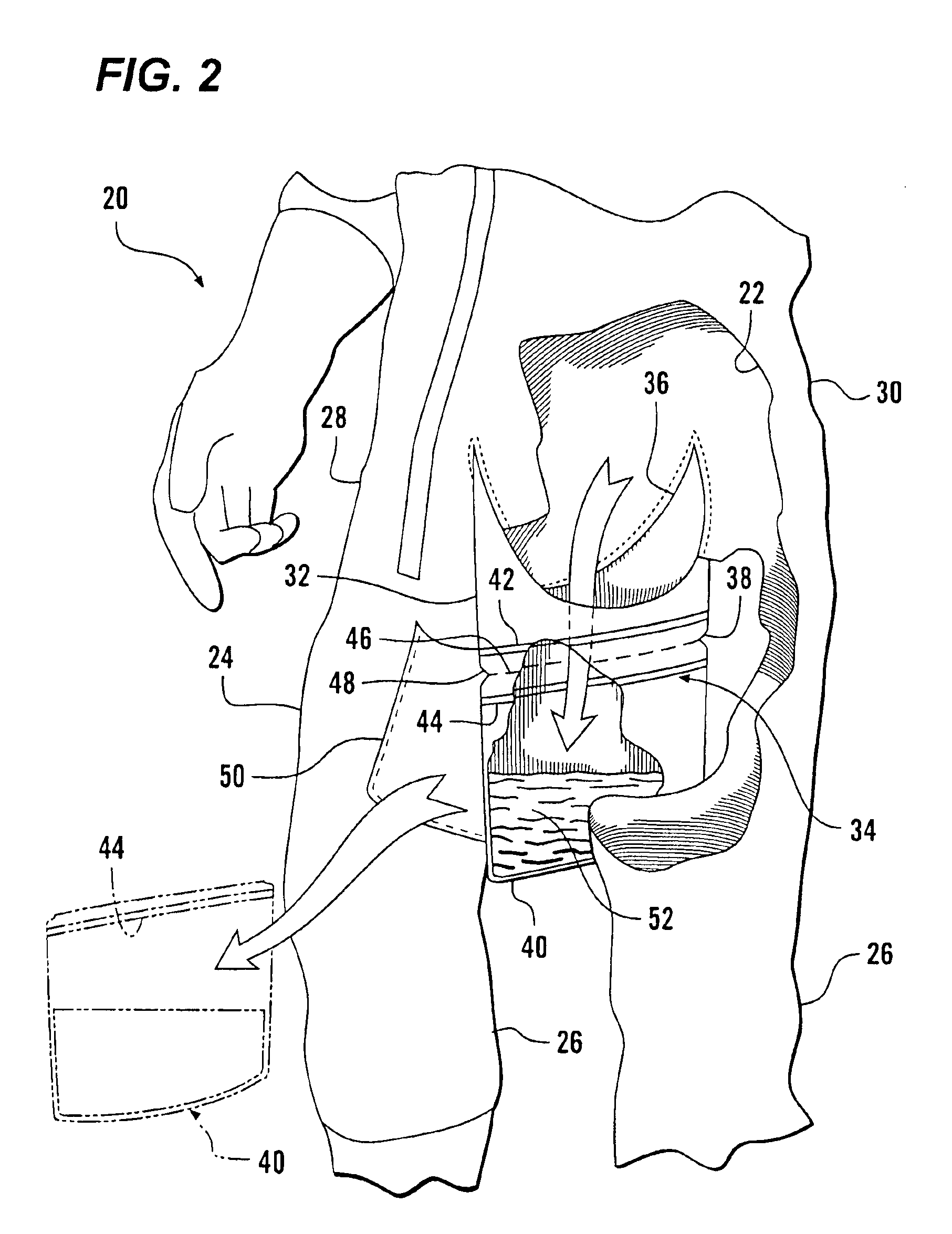Human waste management suit
a technology of human waste and hazard protection suits, applied in the direction of breathing protection, protective garments, medical science, etc., can solve the problems of long-duration operation within a hazard suit, introducing its own problems, and threatening the life or health of those who enter
- Summary
- Abstract
- Description
- Claims
- Application Information
AI Technical Summary
Benefits of technology
Problems solved by technology
Method used
Image
Examples
Embodiment Construction
[0016]Referring more particularly to FIGS. 1-4, wherein like numbers refer to similar parts, a chemical / biological hazard protection suit 20 is shown in FIG. 1. The suit 20 may be fabricated of conventional chemical / biological hazard suit material such as selectively permeable membrane material, and may incorporate conventional features of such suits which promote exchange of water vapor, and cooling air circulation. In addition, the suit 20 may include features which permit it to be donned rapidly, such as in the hazard protection suit disclosed in our co-pending U.S. patent application Ser. No. 10 / 255,569, filed Jun. 19, 2003, the disclosure of which is incorporated by reference herein.
[0017]The suit 20 has a sealed interior 22 defined inwardly of a pants section 24 having two pants legs 26 which extend upwardly to a midsection 28. An upper section 30 extends upwardly from the midsection, and includes a torso-covering section, sleeves, gloves, and a hood with a respirator mask.
[00...
PUM
 Login to View More
Login to View More Abstract
Description
Claims
Application Information
 Login to View More
Login to View More - R&D
- Intellectual Property
- Life Sciences
- Materials
- Tech Scout
- Unparalleled Data Quality
- Higher Quality Content
- 60% Fewer Hallucinations
Browse by: Latest US Patents, China's latest patents, Technical Efficacy Thesaurus, Application Domain, Technology Topic, Popular Technical Reports.
© 2025 PatSnap. All rights reserved.Legal|Privacy policy|Modern Slavery Act Transparency Statement|Sitemap|About US| Contact US: help@patsnap.com



